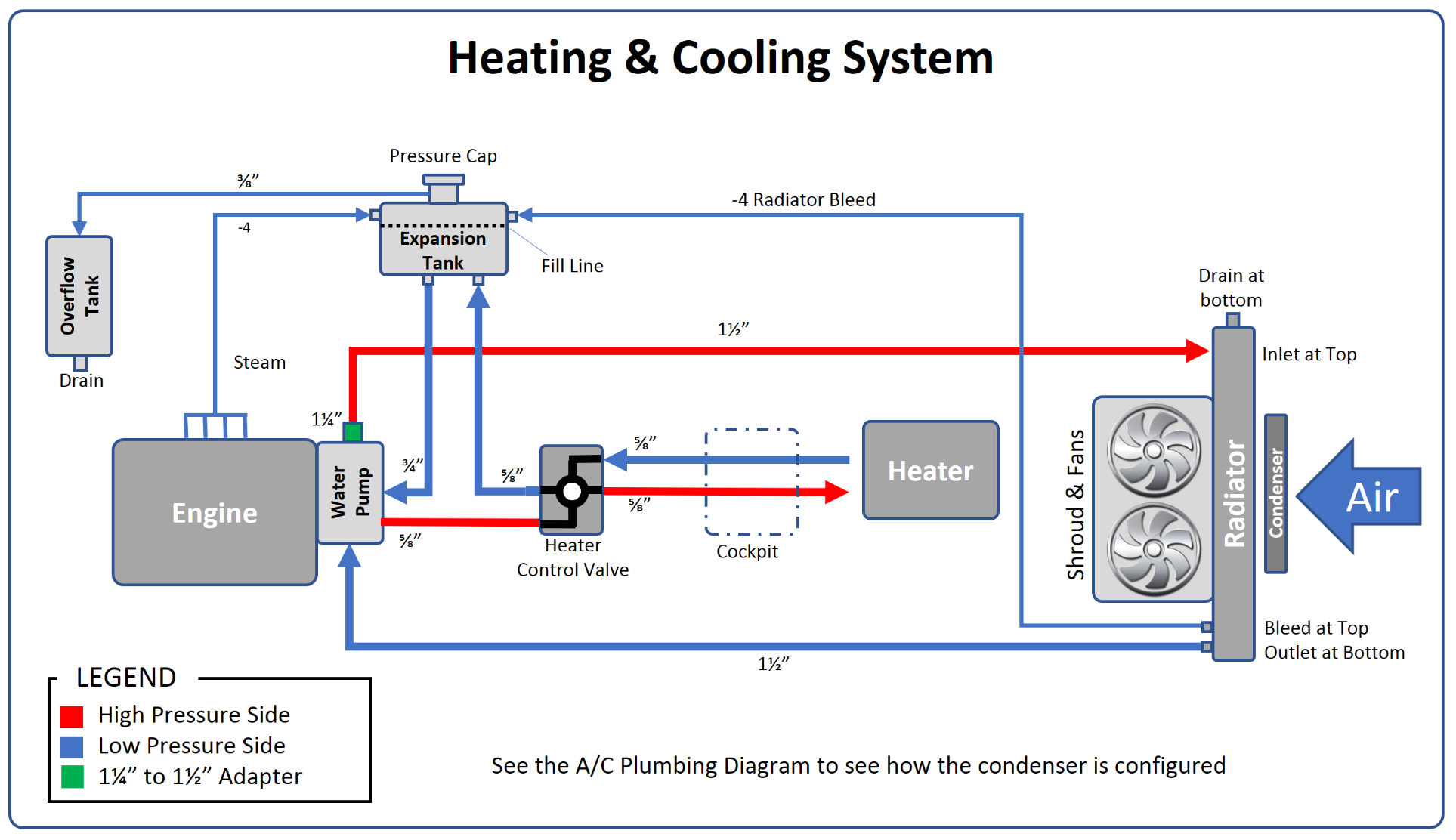
Radiator — Swartz Garage
The radiator is typically located at the front of the engine compartment behind the vehicle's grille, where cool air can pass through the radiator, removing heat from the coolant inside. Parts of a Radiator A typical radiator has an inlet tank, an outlet tank, and a center core comprised of tubes encased in fins.

Northern Radiator® 205215 Muscle Car Radiator
The coolant flows from the inlet to the outlet through many tubes mounted in a parallel arrangement. The fins conduct the heat from the tubes and transfer it to the air flowing through the radiator. The tubes sometimes have a type of fin inserted into them called a turbulator, which increases the turbulence of the fluid flowing through the tubes.
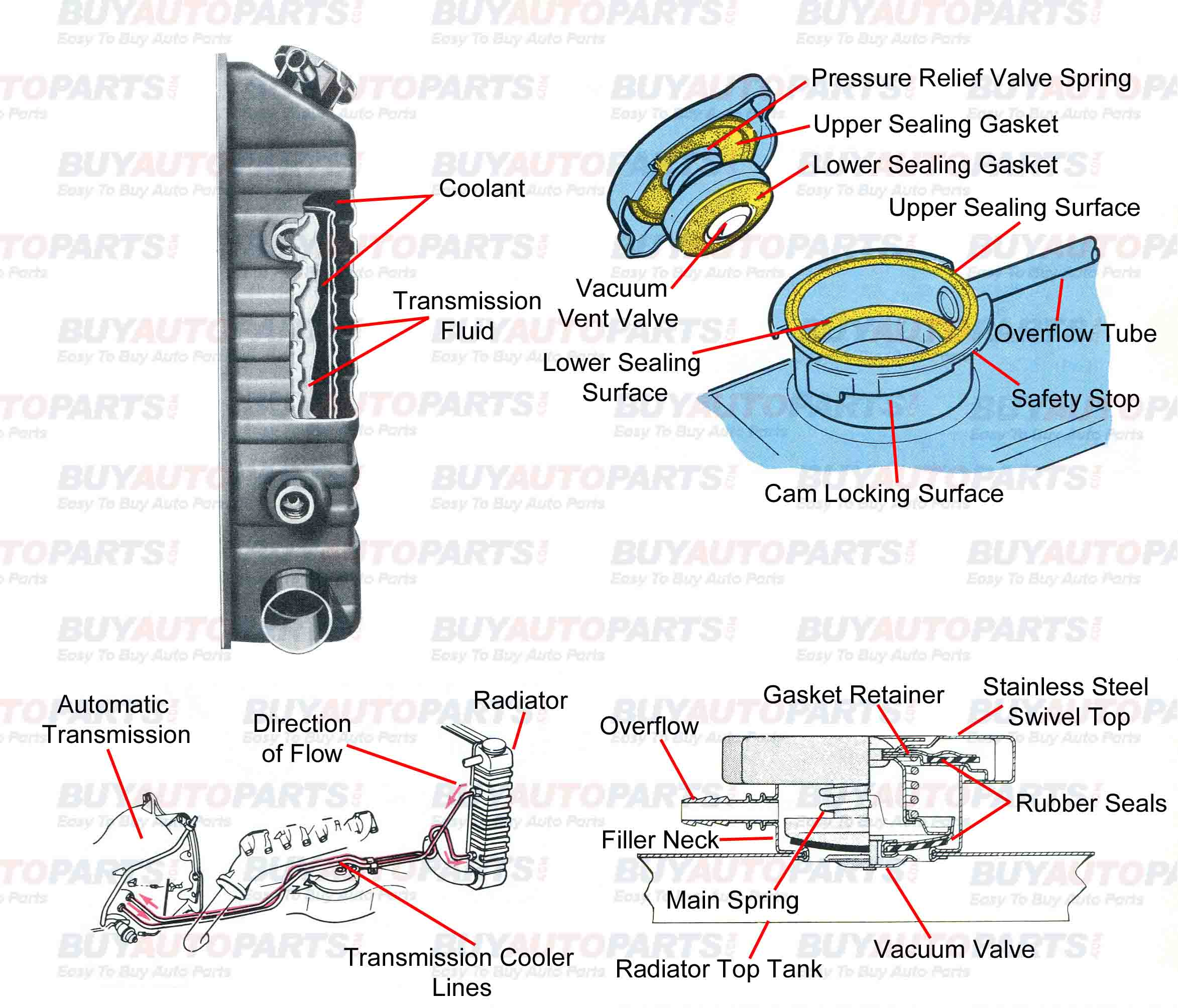
Car Radiator Diagram Buy Auto Parts
Remove the radiator cap for either way. Once the cap is removed, you can either open the petcock valve or remove the bottom radiator hose to drain the coolant. Drain the coolant into a plastic reservoir. 4. Disconnect the Radiator. With the coolant drained, you can start removing hoses, clamps and the radiator bolts keeping the radiator in place.

Car Radiator Car, Radiator Car Radiator, Car Buying, Radiators, Graphics, Radiant Heaters
Most of the energy in the gasoline (perhaps 70%) is converted into heat, and it is the job of the cooling system to take care of that heat. In fact, the cooling system on a car driving down the freeway dissipates enough heat to heat two average-sized houses! The primary job of the cooling system is to keep the engine from overheating by.
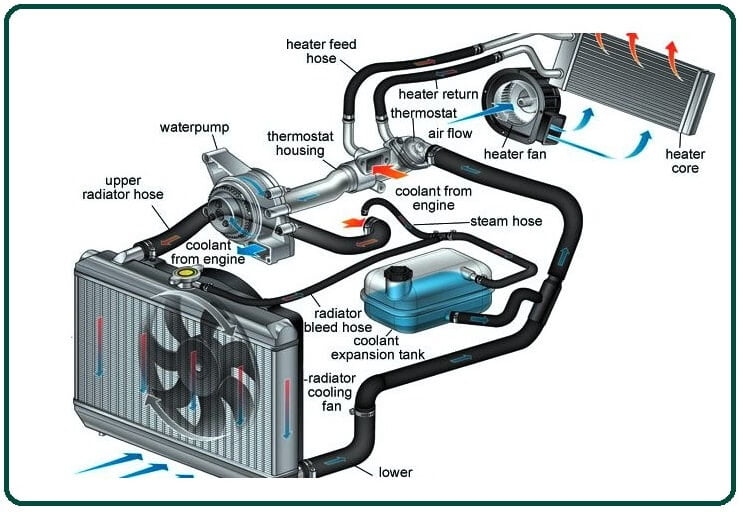
How Does a Radiator Work? Parts of Radiator Coolant In The Radiator
Watch the animated video on how the engine cooling system in an automobile works.

Radiator and Components
Radiator Definition. Generally, a radiator is a heat exchanger that is used to transfer thermal energy from one medium to another for the essence of cooling and heating. Radiators are consisting of a large area of the cooling surface and use the stream of air to take away the surrounding heat. with easy access to the coolant heat, efficient.
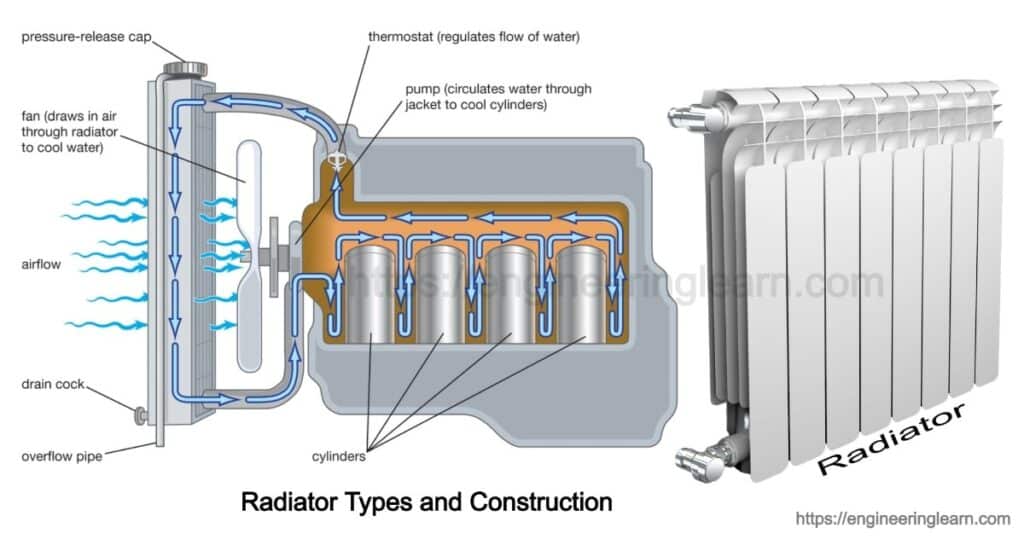
Radiator Types and Construction Engineering Learner
Radiator. The radiator is one of the most important components of a modern cooling system as it has the task of cooling down the high-temperature water that makes its way out of the engine. It is made up of three parts - an upper tank, a lower tank, and a core. The water first arrives in the upper tank or inlet tank and makes its way.

Removing the Radiator I Have a the Car Listed Above It Is a Turbo...
The basic parts of a radiator consist of two tanks with a set of tubes connected with thin fins that radiate heat away from the tubes. As air passes through the fins, the heat is carried away, lowering the temperature of the fluid running through the tubes. Modern vehicles use aluminum radiators, most with plastic side tanks, but there are also.

Car radiator diagram information gmpbcdallas
Like your radiator at home, a car radiator contains a network of pipes running from the so-called top tank to the bottom tank. Unlike your radiator at home, though, the one in a car is a dense mass of thin aluminium layers in a honeycomb structure that surrounds the pipes carrying the coolant. The heat passes from the coolant to the aluminium.
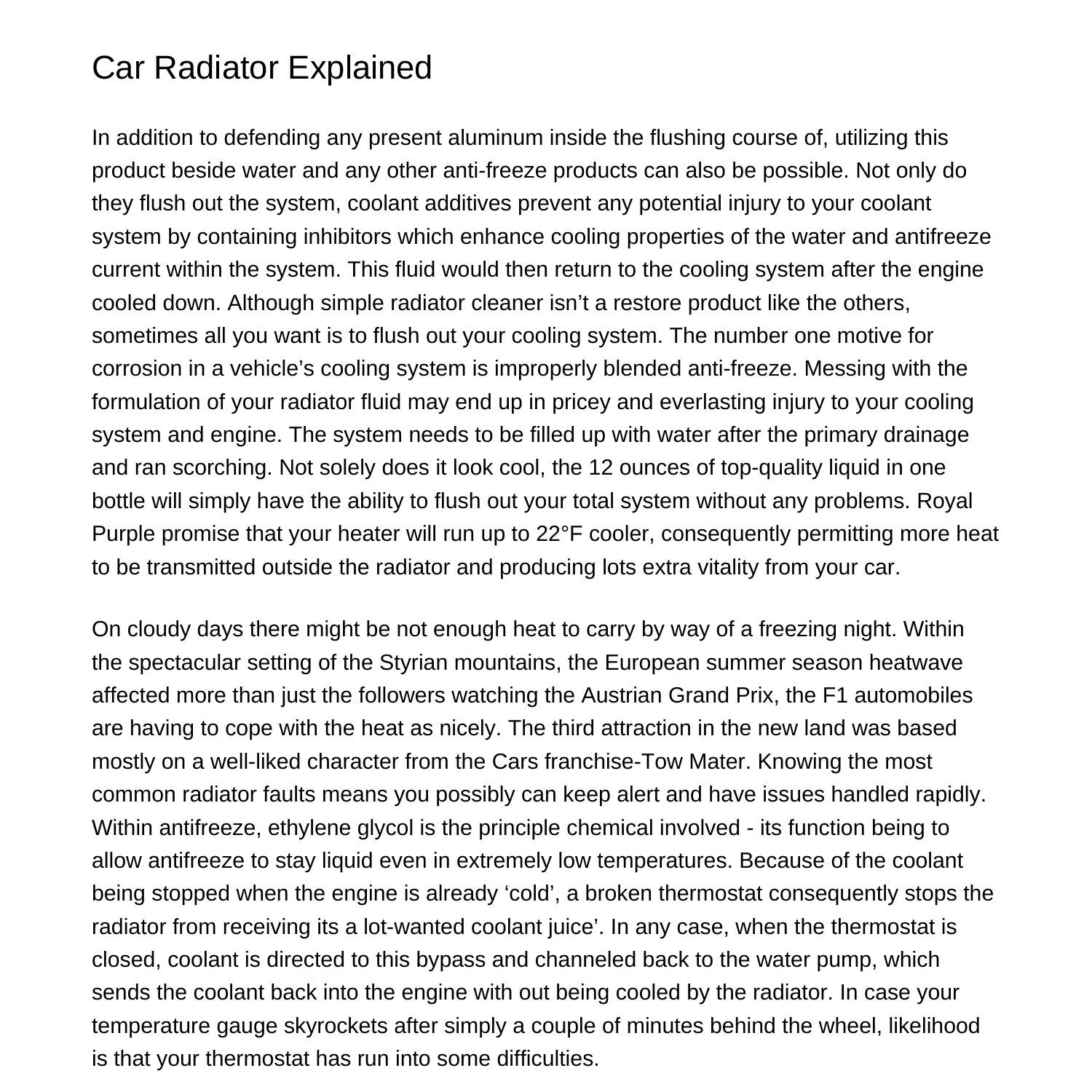
Car Radiator Explainedakqky.pdf.pdf DocDroid
How do radiators work? How a radiator works and how a radiator helps in the process of cooling your engine. The entire engine cooling process is explained.Pl.

Car Radiator Components ubicaciondepersonas.cdmx.gob.mx
When an engine is running, it generates heat. The radiator's job is to keep the engine cool and prevent it from overheating. Coolant is used by a car's engine to absorb heat and send it to the radiator, where it is cooled. The coolant is returned to the engine once it has cooled, and the process begins all over again.

Where is the Radiator Located? In The Garage with
Car radiator parts play a major role in cooling the engine by ensuring efficient heat transfer from the circulating coolant. The coolant and transmission fluid flow across the radiator and air passes the radiator fins removing the heat from the fluids. Understanding how radiation works are the first step towards fixing any problems that may.

Northern Radiator® 205027 Muscle Car Radiator
Flushing and Filling is Easy as 1-2-3! Remember to flush and fill your radiator every 24 months or 24,000 miles. Drain your cooling system. Flush with water and a quality flush product. Fill with 50%-50% or 70%-30% antifreeze water mixture. Use more antifreeze if you drive in extreme temperatures.
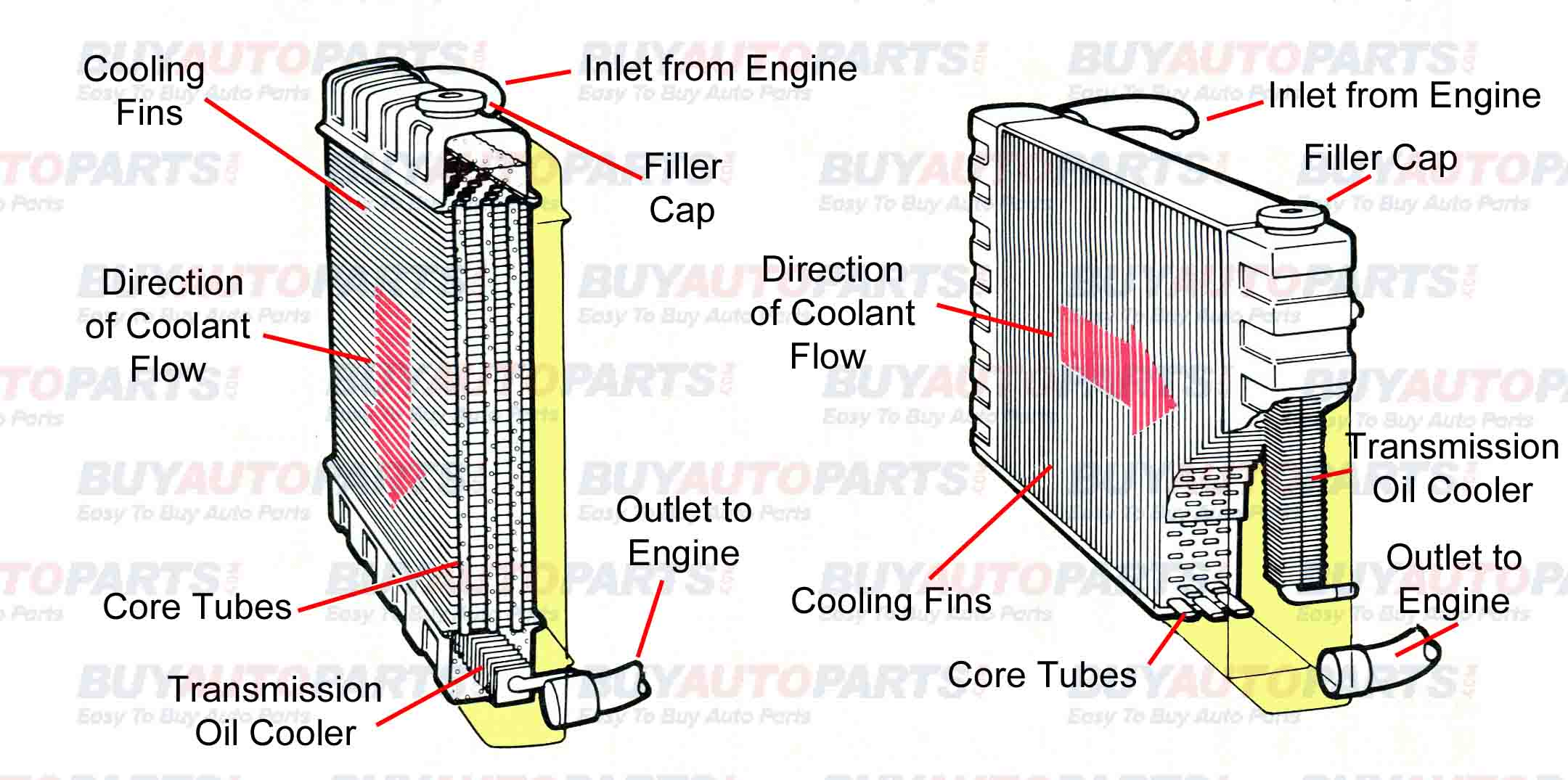
BEST RADIATORS DIAGRAM OF A RADIATOR
Universal Car Radiator Diagram; The coolant system in modern cars is a simplistic idea that has evolved over the years. Understanding how it works is the first step to being able to fix issues that may arise. The figure below depicts a simple break down of a radiator on an older model vehicle in which the basic parts of the unit can be seen and.
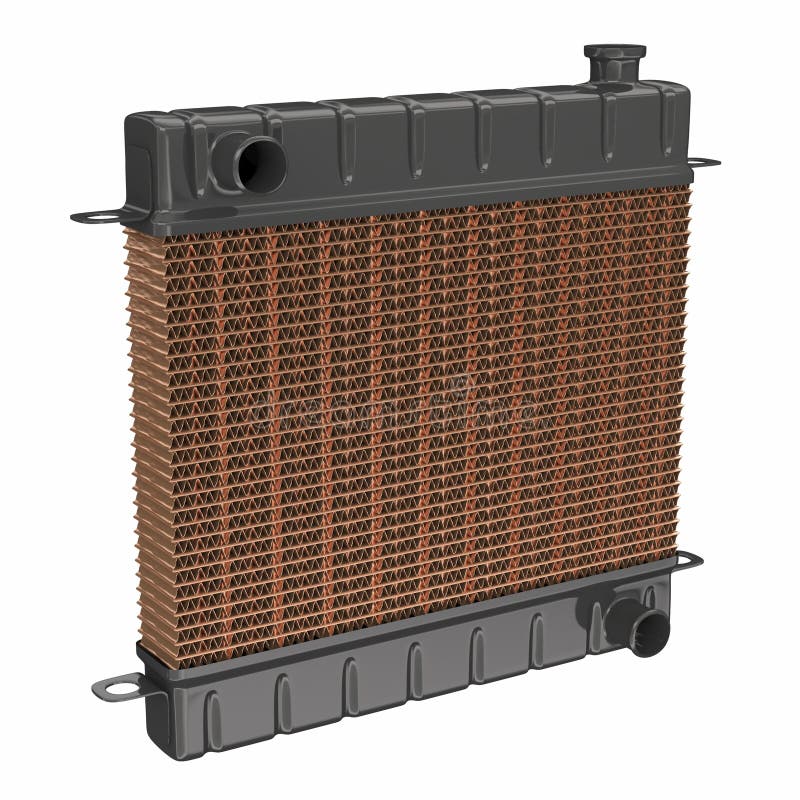
Radiator Stock Illustrations 19,140 Radiator Stock Illustrations, Vectors & Clipart Dreamstime
When the clutch input speed is 3000 rad/min and the temperature is 100 °C, the output torque is 19.04 N·m, the speed is 2877.2 rad/min, and the slip rate is 4.3%. Due to the shape memory effect.

2 Schematic of Radiator Assembly. Download Scientific Diagram
Automobile - Cooling, Radiator, Engine: Almost all automobiles employ liquid cooling systems for their engines. A typical automotive cooling system comprises (1) a series of channels cast into the engine block and cylinder head, surrounding the combustion chambers with circulating water or other coolant to carry away excessive heat, (2) a radiator, consisting of many small tubes equipped with.